Previous Next
When adjusting the balance of a customer’s tires, wheel weights are used to correct any imbalances. The right weight placed in the correct spot helps ensure proper tire performance.
McGee Company stocks all sizes and styles of wheel weights for passenger vehicles and trucks. We have original equipment weights manufactured by Perfect, Bada, and Plombco. We carry lead, zinc, and steel weights coated or noncoated. With increased concern for our environment, the industry has shifted from lead weights.
By applying the weights to the wheel in a specific, precise location, that added counterbalance weight causes the wheel’s mass to be distributed more evenly around the axis of rotation.
This ensures the wheel will rotate without vibration. Weight placement location and amount of counterbalance needed is made easy with modern wheel-balancing equipment.
Two main types of wheel weights are used: clip-on weights; and adhesive weights. The “right” wheel weight depends on both technician preference and wheel application.
Both clip-on and adhesive wheel weights are available in a variety of different materials. Most common are coated steel (to avoid rust), lead, zinc and even types of plastic, but there are also uncoated varieties as well.
Clip-on weights, an industry standard, are fastest to use in the balancing process. It’s important the profile of the clip-on weight used matches the profile of the rim flange. Failure to match the weight design to the rim properly can result in weights moving on the rim, coming off the wheel or scratching up the rim.
If the wheel does not have a flange, adhesive weights — also referred to as “stick-on” or “tape-on” weights –- are the best choice. Adhesive wheel weights are an excellent choice for customers who want their wheels to have a certain aesthetics, as weights can be placed behind spokes or integrated into elements of the wheel design. Tape-on weights come in boxes or rolls.
For adhesive weights, proper surface preparation takes more time, but helps to ensure quality balancing. Be sure the surface of the inside of the rim is clean. That includes carefully removing any existing weights and remaining adhesive residue.
It’s important to clean the wheel before applying new weights, especially with tape weights. Red shop rags usually have oil or grease on them that will prevent proper adhesion of stick-ons. Make sure to use a scraper to get off as much as possible or an automatic adhesive removal tool then apply a spray cleaner and wipe off with a rag that doesn’t have other stains on it or let air dry.
No matter what balancing solution you use like clip on weights, stick on weights, or balancing compounds. McGee Company has the right solution for your needs. This includes the balancing equipment to make sure you have them in the right spot.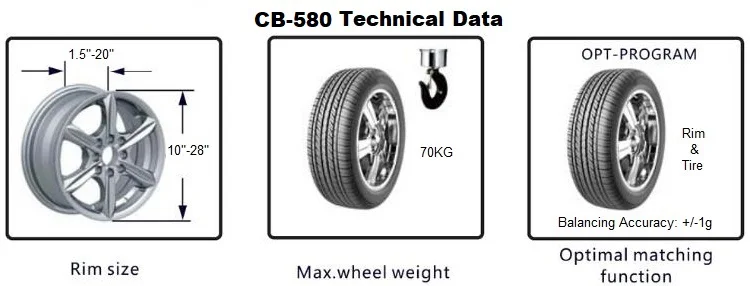 Check out or Wheel Service Equipment section for more info.
Check out or Wheel Service Equipment section for more info.
Go to Top
October 01, 2020 12:00 AM
When adjusting the balance of a customer’s tires, wheel weights are used to correct any imbalances. The right wheel weight placed in the right spot helps ensure proper tire performance.
It’s all about physics.
By applying the weights to the wheel in a specific, precise location, that additional counterbalance weight causes the wheel’s mass to be distributed more evenly around the axis of rotation.
This ensures the wheel will rotate without vibration. Weight placement location and amount of counterbalance required is made easy with modern wheel-balancing equipment.
Two main types of wheel weights are used: clip-on wheel weights; and adhesive wheel weights. The “right” wheel weight depends on both technician preference and wheel application.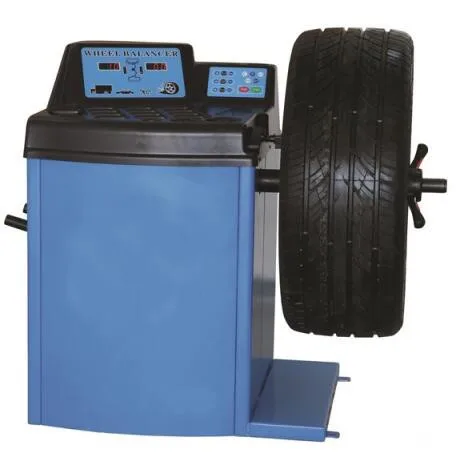
Both clip-on and adhesive wheel weights are available in a variety of different materials. Most common are coated steel (to avoid rust), lead, zinc and even types of plastic.
By nature, technicians often prefer more malleable materials for clip-on weights so they’re easier to install faster with less force. The variety of clip-on designs allow the technician to match them to the profile of the rim flange.
For adhesive weights, the material doesn’t matter as much as the quality of the adhesive tape that secures it to the rim.
Prices often vary based on materials used. Local and state environmental ordinances also may impact the choice of wheel weights used, particularly where lead is concerned.
Clip-on wheel weights, an industry standard, are fastest to use in the balancing process. The design concept hasn’t changed much since the 1930s when they first became popular. Knocking them into the right place on the wheel’s rim flange is a fast process compared with steps necessary to apply adhesive weights.
It’s important the profile of the clip-on weight used matches the profile of the rim flange. Failure to match the weight design to the rim properly can result in weights moving on the rim, coming off the wheel or scratching up the rim.
If the wheel does not have a flange, adhesive wheels weights -- also referred to as “stick-on” or “tape-on” weights –- are the best option. Adhesive wheel weights are a good choice for customers who want their wheels to have a certain aesthetics, as weights can be placed behind spokes or integrated into elements of the wheel design.
For adhesive weights, proper surface preparation takes more time, but helps to ensure quality balancing. Be sure the surface of the inside of the rim is clean. That includes properly removing any existing weights and remaining adhesive residue.
It’s also important to clean the wheel before applying new wheel weights. Once the wheel surface is clean and the proper amount of weight is determined, remove the backing of the wheel-weight strip and place the weight in the center of the imbalance point. Apply pressure to make sure contact with the rim is secure.
Apply pressure to make sure contact with the rim is secure.
Finally, re-spin the assembly to ensure proper balance has been achieved.
To reduce the risk of a traffic accident, it is necessary to maintain the correct operation of each component of the car. And this concerns the wheelbase in the first place. The unstable position of the wheels on the road can cause serious consequences, especially when driving at high speed. Each driver performs wheel balancing at his own request. This procedure will make driving more comfortable and safer, and extend the life of the transmission.

The axis of rotation with a uniform distribution of weight must coincide with the center of mass of the wheel. If this does not happen, an imbalance appears, causing centrifugal force with different application vectors. As a result, vibration occurs in the wheels, leading to the appearance of unforeseen loads. When balancing the wheels, it disappears due to the focusing of all applied forces in the center.
To understand why you need to do balancing, it is worth considering just a few consequences of the appearance of an imbalance:
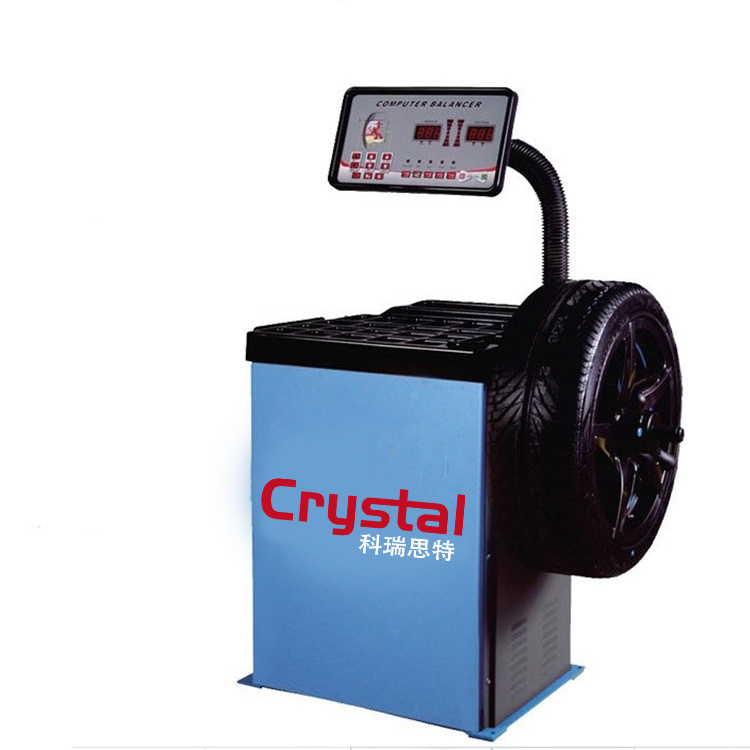 Therefore, if you do not want to change tires often, it is better to balance them regularly.
Therefore, if you do not want to change tires often, it is better to balance them regularly. Another negative phenomenon is the high vibration that is transmitted to the steering wheel. This greatly complicates the management process and leads to rapid fatigue.
The more accurately the process is performed, the more convenient it is to drive a car. This is due to the presence of centrifugal force, which directly depends on the speed of movement. That is, the faster the car moves, the greater the negative effect caused by the lack of balancing or its low accuracy.
Depending on the relative position of the axis of rotation of the wheel and the axis of inertia, the imbalance can be of two types:
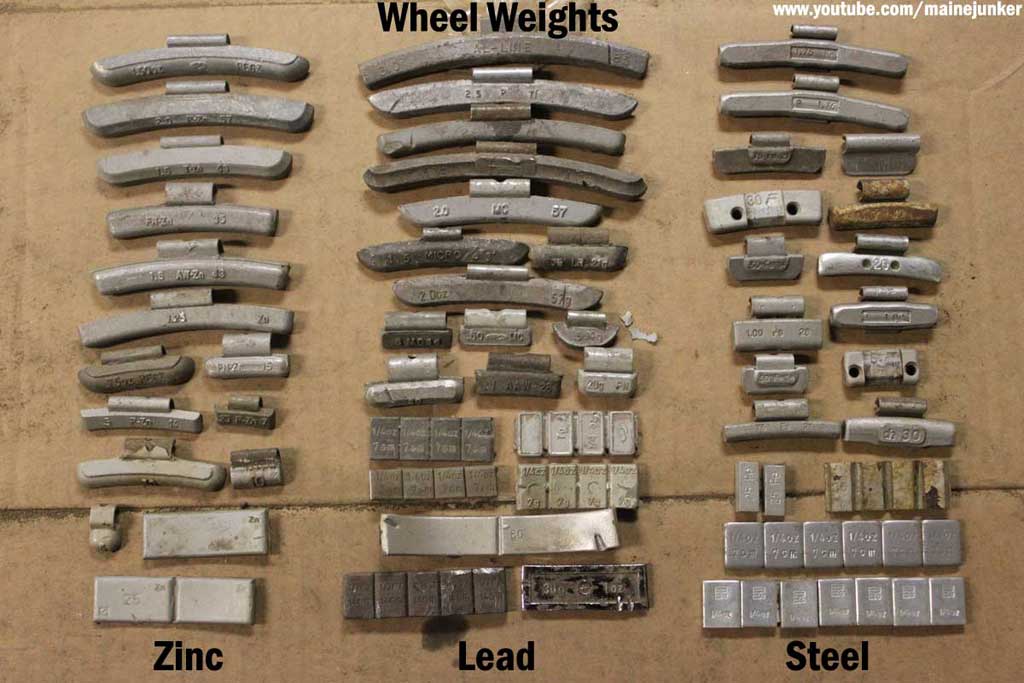 This is due to the shift to one side of the center of gravity of the tires;
This is due to the shift to one side of the center of gravity of the tires; In rare cases, both types of imbalance may be present. But any balancing machine can easily cope with this problem.
The procedure is performed only on a fully assembled wheel. There are several methods by which balancing is performed:
During automatic balancing, a special material or sand is used, which is poured into the tire. Due to centrifugal force, it is distributed over its inner surface, providing a weight balance.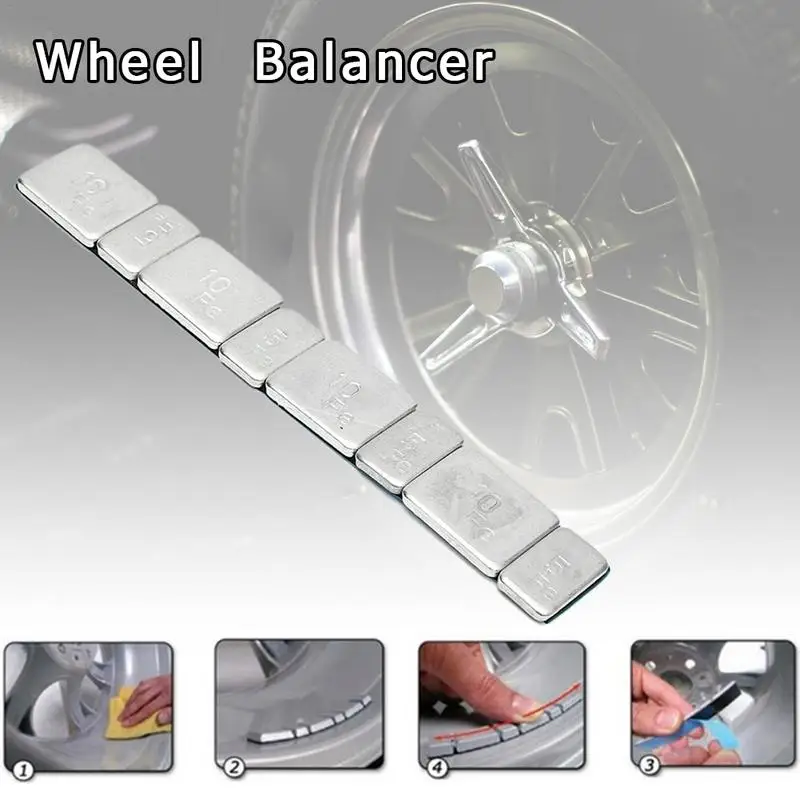 The main disadvantage of the method is its limited application - mainly for trucks and SUVs.
The main disadvantage of the method is its limited application - mainly for trucks and SUVs.
This method is familiar and familiar to almost every driver - this technique is in almost every tire fitting point. The main goal is to identify places for fixing special weights that eliminate the weight imbalance. To do this, when balancing the wheel, it spins, and after a complete stop, data on the weight of the weight and the place of its fixing are displayed on the monitor. To improve accuracy, they are fixed on the inside and outside of the wheels. With relative simplicity, such wheel balancing is highly accurate.
Most often, stuffed weights are fixed on the wheels. But their main drawback is damage to the paintwork of the disc, leading to corrosion. When balancing alloy wheels, self-adhesive weights are mainly used. They spoil the aesthetics of the wheel less, but over time they can peel off due to a decrease in the holding capacity of double-sided tape.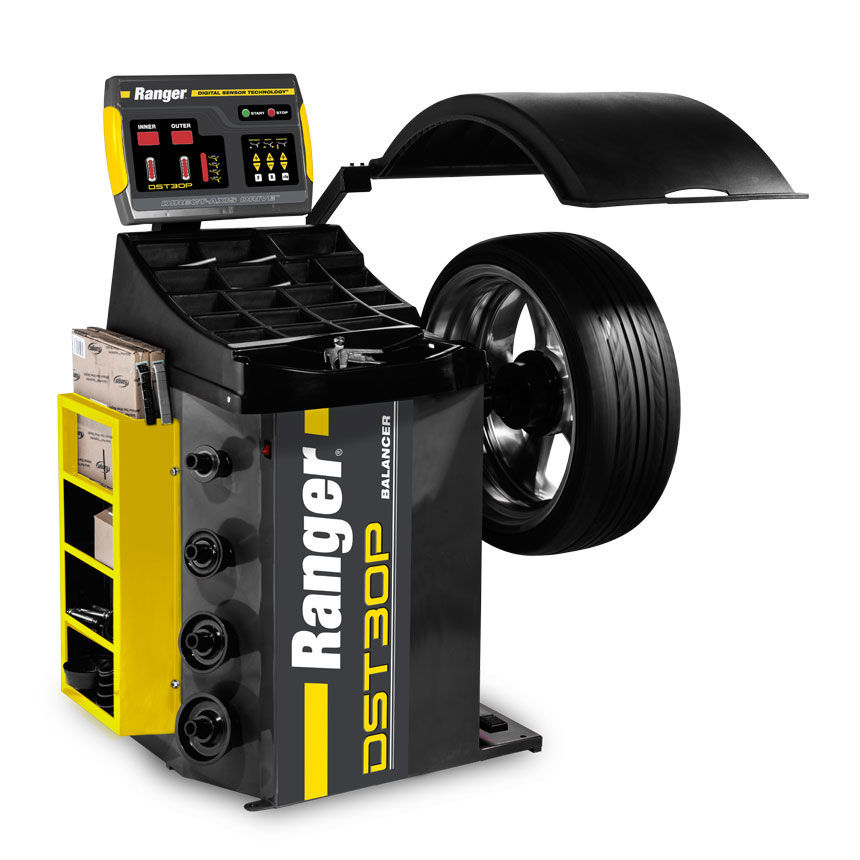
This method also involves the use of special equipment. But the wheels are not removed. The advantage here is that the whole system is balanced. When finishing balancing, the wheels spin up to high speed, after which weights are hung in the right places.
When passing scheduled maintenance, the presence of an imbalance is checked and its elimination is carried out. Wheel balancing is also required when changing tires. But there are a number of factors that require an unscheduled passage of this procedure:
 Due to its unevenness, the axes are displaced, which also requires more frequent balancing.
Due to its unevenness, the axes are displaced, which also requires more frequent balancing. If there are no visible violations in the design, you will have to focus on the behavior of the car on the road - steering wheel vibrations, jumps, etc.
Many drivers mistakenly believe that this procedure makes no sense, because they are not directly involved in driving. In fact, there is not much less tire wear than on the front wheels. The main difference is that it will be almost impossible to notice an imbalance - they are not related to the steering mechanism, and vibrations will not be felt. Therefore, it is definitely necessary to balance the rear wheels, focusing on the results of their visual inspection.
The distribution of mass is carried out using weights that cling to the outer and inner (if technologically possible) surfaces of the rim. To do a good job, a specialist must:

Balancing must be performed using a minimum number of fasteners. Ideally, it should be alone. But to achieve this, especially with significant damage to the rim, is almost impossible. Therefore, when evaluating the work, you need to look at the number of weights used (there should be a minimum number) and the location on the rim (preferably closer to the spokes).
There are no strict requirements for the frequency with which wheel balancing should be performed. Manufacturers recommend doing it every 15 thousand km. Fans of high-speed driving, sharp drifts and braking can safely divide this distance in two. It is necessary to carry out balancing of all wheels in time so that the car does not cause an accident.
Online Entry
Price List
Wheel balancing is used to prevent wheel vibration or "knock" that occurs when a car wheel is unbalanced by weight, and also prevents deformation and early wear of tires. No matter how accurate tires are produced, as a rule, their center of mass of the wheel does not converge with its geometric center. The task of balancing is to bring them as close as possible to each other.
No matter how accurate tires are produced, as a rule, their center of mass of the wheel does not converge with its geometric center. The task of balancing is to bring them as close as possible to each other.
If the vibration does not disappear when the vehicle is driven with balanced wheels, then this is a sign that the disc is deformed or the tires are unevenly worn.
If wheels are not balanced in time , then in addition to unpleasant sensations, suspension and steering rack elements will fail very quickly, the repair of which will cost a pretty penny
Tire balancing is performed only on disks, and, in turn, new disks, before putting tires on them, are checked for geometry without fail.
The most common balancing method is balancing on a balancing machine. Modern balancing machines have high precision. To align the "geometry" of the wheel, special metal weights are glued to the disk, which eliminate the weight imbalance. When it is not possible to stick a weight, stuffed weights are used, which are attached to the outer edge of the disk. True, the minus of stuffed weights is the fact that they spoil the coating of the disk, as well as oxidize the place where the weight is attached. In turn, self-adhesive weights can peel off over time, as well as be washed off with a strong pressure of water when washing the car.
Modern balancing machines have high precision. To align the "geometry" of the wheel, special metal weights are glued to the disk, which eliminate the weight imbalance. When it is not possible to stick a weight, stuffed weights are used, which are attached to the outer edge of the disk. True, the minus of stuffed weights is the fact that they spoil the coating of the disk, as well as oxidize the place where the weight is attached. In turn, self-adhesive weights can peel off over time, as well as be washed off with a strong pressure of water when washing the car.
Weights are attached both from the outside and from the inside of the wheel. The machine monitor shows the weight and place for installing the weights.
Final balancing is performed without removing the wheels from the car and allows you to balance the hub and the wheel together, thereby eliminating the suspension imbalance as much as possible.
The essence of this method is to spin the wheel up to a speed of 80-90 ks/h, which allows you to make accurate measurements and correct the unbalance of the assembly as a whole.